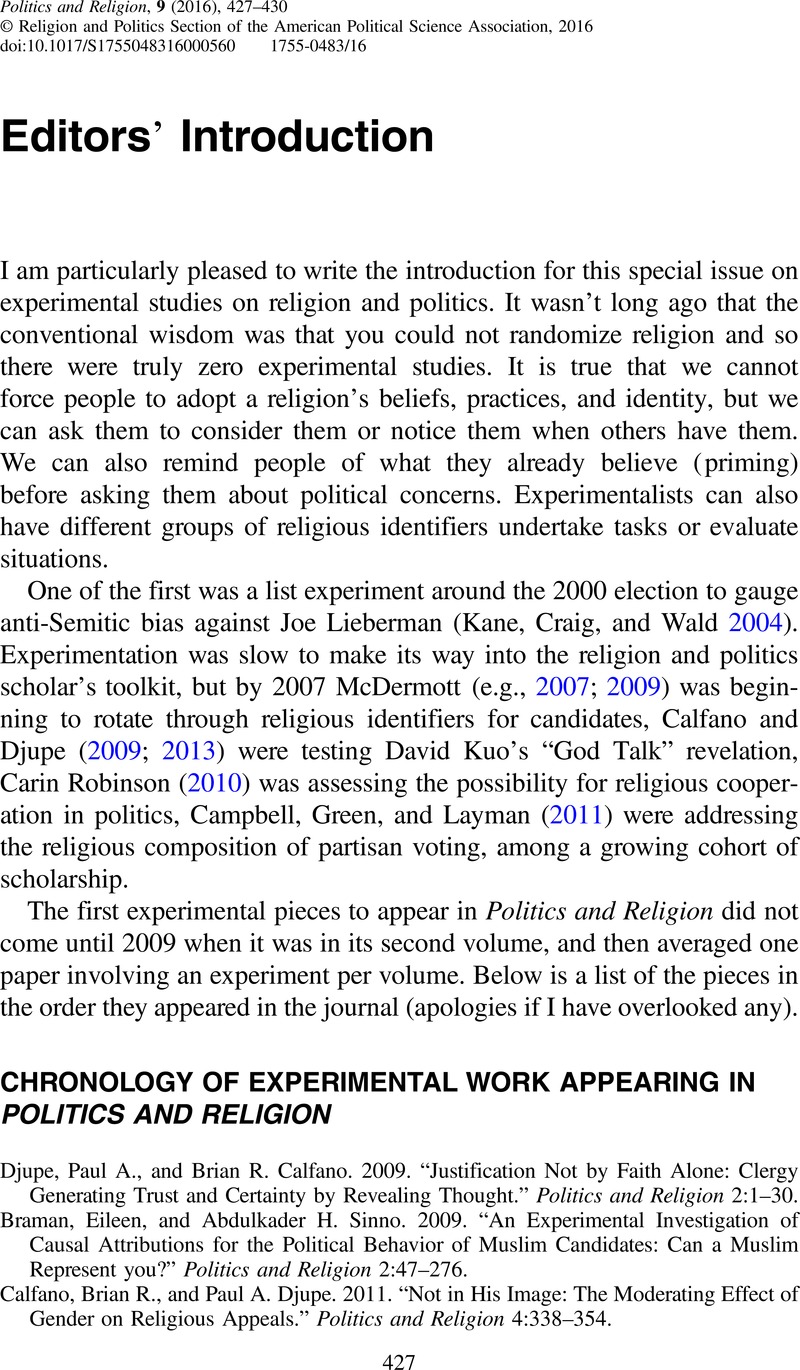No CrossRef data available.
Article contents
Editors' Introduction
Published online by Cambridge University Press: 08 July 2016
Abstract
An abstract is not available for this content so a preview has been provided. Please use the Get access link above for information on how to access this content.

- Type
- Introduction
- Information
- Copyright
- Copyright © Religion and Politics Section of the American Political Science Association 2016
References
REFERENCES
Beard, T. Randolph, Ecklund, Robert B. Jr., Ford, George S., Gaskins, Ben, and Tollison, Robert D.. 2013. “Secularism, Religion, and Political Choice in the United States.” Politics and Religion
6:753–777.Google Scholar
Calfano, Brian R., and Djupe, Paul A.. 2009. “God Talk: Religious Cues and Electoral Support.” Political Research Quarterly
62:329–339.Google Scholar
Campbell, David E., Green, John C., and Layman, Geoffrey C.. 2011. “The Party Faithful: Partisan Images, Candidate Religion, and the Electoral Impact of Party Identification.” American Journal of Political Science
55:42–58.Google Scholar
Kane, James G., Craig, Stephen C., and Wald, Kenneth D.. 2004. “Religion and Presidential Politics in Florida: A List Experiment.” Social Science Quarterly
85:281–293.Google Scholar
McDermott, Monika L.
2007. “Voting for Catholic Candidates: The Evolution of a Stereotype.” Social Science Quarterly
88:953–969.CrossRefGoogle Scholar
McDermott, Monika. 2009. “Religious Stereotyping and Voter Support for Evangelical Candidates.” Political Research Quarterly
62:340–354.CrossRefGoogle Scholar
Robinson, Carin. 2010. “Cross-Cutting Messages and Political Tolerance: An Experiment Using Evangelical Protestants.” Political Behavior
32:495–515.CrossRefGoogle Scholar


